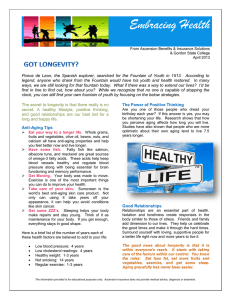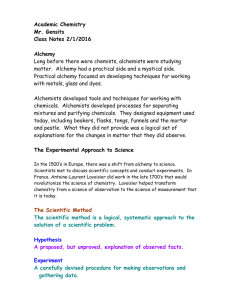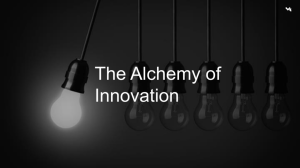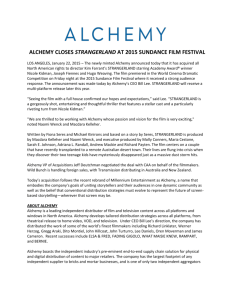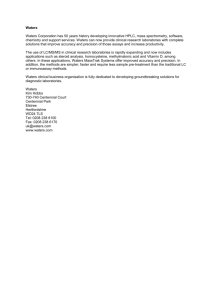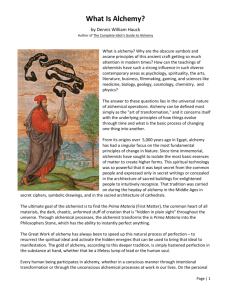Anti-Aging: The Quest for the “Fountain of Youth” - Meta
advertisement
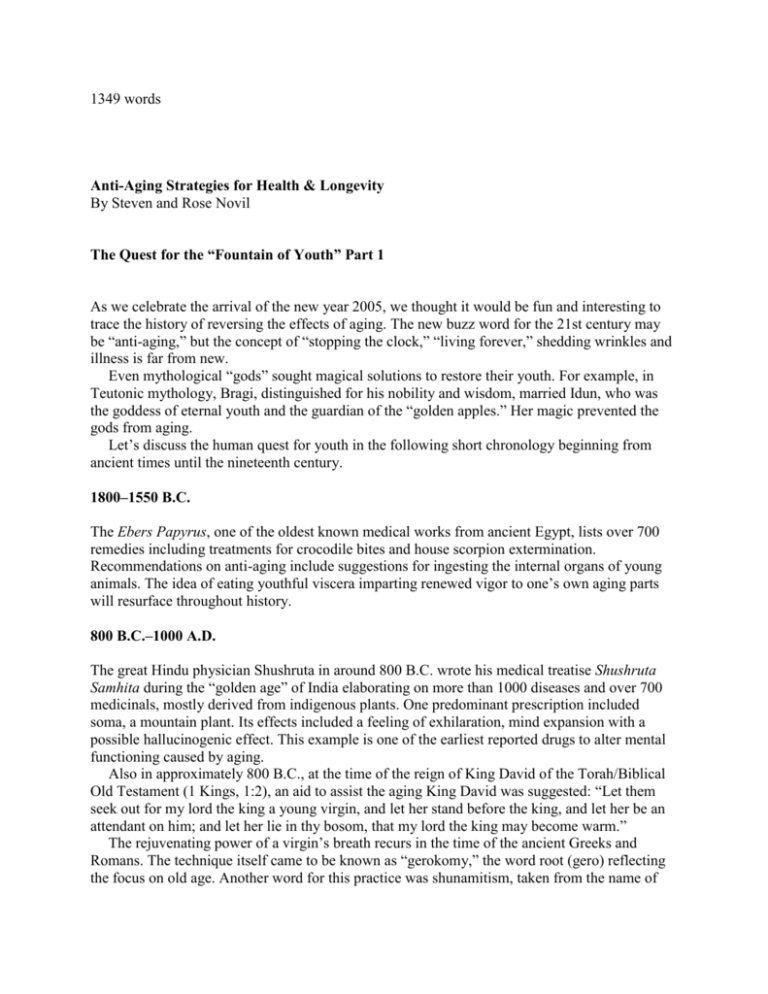
1349 words Anti-Aging Strategies for Health & Longevity By Steven and Rose Novil The Quest for the “Fountain of Youth” Part 1 As we celebrate the arrival of the new year 2005, we thought it would be fun and interesting to trace the history of reversing the effects of aging. The new buzz word for the 21st century may be “anti-aging,” but the concept of “stopping the clock,” “living forever,” shedding wrinkles and illness is far from new. Even mythological “gods” sought magical solutions to restore their youth. For example, in Teutonic mythology, Bragi, distinguished for his nobility and wisdom, married Idun, who was the goddess of eternal youth and the guardian of the “golden apples.” Her magic prevented the gods from aging. Let’s discuss the human quest for youth in the following short chronology beginning from ancient times until the nineteenth century. 1800–1550 B.C. The Ebers Papyrus, one of the oldest known medical works from ancient Egypt, lists over 700 remedies including treatments for crocodile bites and house scorpion extermination. Recommendations on anti-aging include suggestions for ingesting the internal organs of young animals. The idea of eating youthful viscera imparting renewed vigor to one’s own aging parts will resurface throughout history. 800 B.C.–1000 A.D. The great Hindu physician Shushruta in around 800 B.C. wrote his medical treatise Shushruta Samhita during the “golden age” of India elaborating on more than 1000 diseases and over 700 medicinals, mostly derived from indigenous plants. One predominant prescription included soma, a mountain plant. Its effects included a feeling of exhilaration, mind expansion with a possible hallucinogenic effect. This example is one of the earliest reported drugs to alter mental functioning caused by aging. Also in approximately 800 B.C., at the time of the reign of King David of the Torah/Biblical Old Testament (1 Kings, 1:2), an aid to assist the aging King David was suggested: “Let them seek out for my lord the king a young virgin, and let her stand before the king, and let her be an attendant on him; and let her lie in thy bosom, that my lord the king may become warm.” The rejuvenating power of a virgin’s breath recurs in the time of the ancient Greeks and Romans. The technique itself came to be known as “gerokomy,” the word root (gero) reflecting the focus on old age. Another word for this practice was shunamitism, taken from the name of the young woman who slept with King David, Abishag the Shunammite. Believe it or not, this practice continued into the 18th century, where throughout Europe many people were aware of the Dutch physician Hermann Boerhaave’s prescription for vitality that an old man should sleep between two virginal young women to regain health. In India in around 700 B. C., the Hindus tried to find the restorative waters of the Pool of Youth. Associated with the legend of Cyavana, the aged and high ranking priest, to whom Sukanya, the king’s young daughter was given in marriage, Cyavana, upset by their difference in ages, searched for the Pool of Youth. He discovered it, bathed in its restorative waters, and emerged youthful and handsome. The belief in “Healing waters,” such as the hot springs at Bath, England, were recorded to have been used by the Celts and then the Romans. They are still used today and the belief that the waters are restorative still prevails. At about the 4th century B.C. in China, the earliest attempt to achieve immortality through ingestible substances appears where a magical substance or potion is mentioned. The word elixir was not used until the 7th century A.D., taken from the Arabic name for miracle substances “al iksir,” later evolving into the English word “elixir.” Arabs introduced the system of alchemy to Europe around the 7th century A.D. The central focus of alchemy is transmutation or changing of one form, substance, or condition into another. Historically, alchemists attempted to transform common metals into gold, old age into youth, and sickness into health. For the Chinese of the first century B.C., an elixir containing gold flecks was considered potent. They also believed they could retain their health and vitality by using gold utensils which had been transmuted from mercury in order to gain the benefits. Unfortunately, they unwittingly shortened their lives by poisoning themselves with mercury by practicing this form of alchemy. Around the seventh century A.D., Tan Chin Yao Ch’eh (Great Secrets of Alchemy), China’s most famous book on alchemy, was published. At this time alchemy also was experiencing great growth in Europe. 1000 A. D.–Ninteenth Century Roger Bacon, the English Franciscan philosopher, scientist, and scholar during the 1200s was a proponent of alchemy and cited many examples of individuals who experienced marked longevity and other changes after ingesting wondrous secret potions. He wrote of a man who, after drinking a mysterious drug, soon felt “renewed in mind and body beyond measure.” Bacon himself lived to the old age of 80, quite a feat in the 1200s. The theme of healing restorative waters reappears throughout European history and legend. One such story is that of Juan Ponce de Leon (1460?–1521) and his search for the magical water source, The Fountain of Youth. While failing to discover this mythical fountain, he did discover Florida, and it is true that the warm waters of the Atlantic Ocean have been a “magical healing” for hundreds of thousands of people who go to retire there. Lucas Cranach, the Elder (1472-1553), the German painter also painted the Fons Juventutis (the fountain of youth). Diet as means to longevity has had proponents for hundreds of years. One example is a sixteenth century treatise, Castel of Helthe. Written in 1534 by Sir Thomas Elyot, a member of Sir Thomas More’s circle and respected as an authority in medicine, literature, and philosophy, he writes to older people to adhere to a prudent diet: “Always remember that aged men should eat often; and but little every time, for it fareth by them as it doth by a lamp, the light whereof is almost extinct, which by pouring oil and little is kept long burning, but with much oil poured in at once, it put out.” This advice to restrict the amount of food eaten or caloric restriction is one approach that has been shown by research to increase longevity in warm-blooded animals. Rejuvenation by injection of fluids became very popular in the fifteenth century. Injecting blood in particular was considered the most effective. For example, Pope Innocent VIII wanted to increase his longevity, so he arranged to have several young men give him blood. Unfortunately, he died almost immediately, probably due incompatible blood types. By the nineteenth century, the fluid injections broadened in scope. One of the most popular was the processed sex glands of young animals. Sound familiar? Remember the idea of ingesting the internal organs of young animals used during the time of the ancient Egyptians? Similar, but instead of ingesting or eating the organs, the technology now allowed them to inject the sex glands which had been isolated from the organs. Next month: The quest continues from the twentieth century until today. How to Live Forever: Lessons of History from BMJ.COM (BMJ 2000;321:1580-1582 23 December). Cohen, Gene D. The Creative Age: Awakening Human Potential in the Second Half of Life. NY, Avon. 2000. Steven and Rose Novil are both doctors of nutrition and naturopathy. Steven practices in Chicago and has lectured at international conferences on Anti-Aging as well as locally, and is an advisor to major supplement companies. In addition to her degrees in health, Rose is also a Professor of Library Services at Oakton Community College, consulting with Steven and researching new developments in the field of Anti-Aging. Their goal is to help people become pro-active and informed partners in creating their own personal anti-aging programs. Readers are reminded to always check with their health care provider before starting any health regimen. This information is not meant to diagnose or treat any illness or disease; it is for educational purposes only. Steven can be reached by phone at 312-458-9676 (24 hour voicemail) or at livonlivon@yahoo.com.
